Any vegetable gardener has experienced firsthand how much plant matter winds up in the compost. And most produce-loving home cooks, whether they compost or not, know that a lot of the food they bring home winds up in the form of peels and trimmings that never make it to the table.
But some of us get really excited to eat this overlooked stuff, and we’re talking way beyond throwing broccoli stems in a stir-fry. There’s a growing desire to curb our own food waste at home, fueled both by frugality and mindfulness. If you invest the time in making a food plant thrive, you’re invested in it emotionally; you want to eat as much of it as possible.
If you love looking at familiar ingredients in new ways, discovering different uses for what usually lands in the trash or rubbish heap is a tiny thrill and inspiring challenge—you’ll find unexpected flavors and textures that make you rethink the common, blasé produce we all take for granted. Here’s a big handful of tasty and exciting ways to consume those neglected plant parts, intercepting them before they become compost.
Carrot Tops
Carrot top pesto had been having a moment the past few years, and now it’s burning up Pinterest. And why shouldn’t it? Use the lacy green fronds of carrots as you would basil leaves to make emerald-hued pesto. Chef April Bloomfield calls this kind of approach “top to tail vegetable cooking” (which is a lot more cuddly-sounding than the traditional cheffy term for this kind of behavior, “good utilization of product”). Here’s a recipe for carrot top pesto from her most recent cookbook, A Girl and her Greens.
The Stems of Kale, Mustard, & Collard Greens
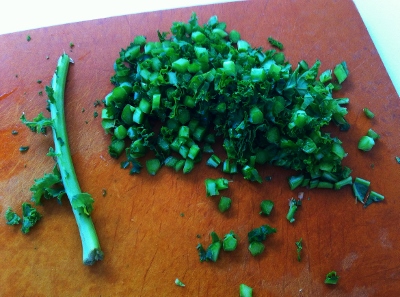
Most any leafy brassica’s stem is edible, but it’s tough. So many recipes call for stemming cooking greens and discarding the stems, but if I’m feeling ambitious, I set the stems aside, trim off their bottoms, and slice the rest thinly crosswise. Their flesh is slightly sweeter than their leafy parts, and they add an appealing, confetti-like visual element to cooked greens. I add the chopped-up stems to the pan shortly before adding the leafy greens themselves.
And, to be honest, sometimes I skip the stems and pitch them—either because I’m feeling lazy, or because it’s just not a good fit for the recipe. But I love knowing the option’s always there.
Lettuce Cores
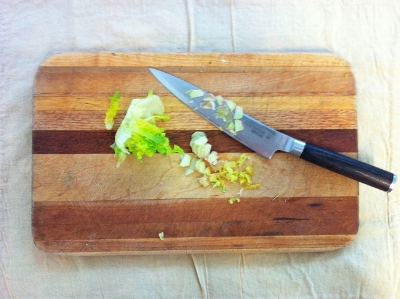
This is my very favorite secret tasty plant part of all time. I first found out about it from Julia and Jacques Cooking at Home, where Jacques Pepin wrote, “Whenever I make a salad with head lettuce, such as Boston or romaine, I cut out the core—the center of the stem, where the leaves join—slice it very thin, and add those pieces to the salad.” The cores have a bitter flavor reminiscent of chicory or Belgian endive, and a resilient crunch that adds an intriguing element to regular tossed salads. Cut off and discard the oxidized base of the core, and trim off any scraggly ends of leaves if they’ve got grit or dirt embedded in them. Then go to town, though since the cores can pack a punch, do as Jacques advises and slice them thinly. He goes on to say that you can cook the cores as you would a vegetable, though unless you are coring many heads of lettuce at once—as they would at a restaurant—it probably makes the most sense to stick to the raw option.
Radish Greens
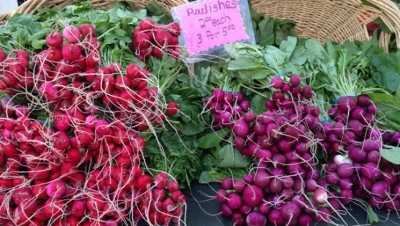
Danguole Lekaviciute
You know about beet greens, probably, but there are other tasty, cookable greens that we often pitch. Radish greens, for one. They wilt down to nothing, but if I have a bunch of radishes on hand while I’m getting ready to cook up a big mess of other leafy greens such as mustard or collards, I always add the radish greens to the pan, too. They cook up quickly and shrink down dramatically, like spinach, so add them very close to the end of the cooking time. Radish greens have a very short shelf life; if you want to cook them, it’s best to do it within a day or two of sticking that pretty little bundle of radishes in your fridge.
Tomato Leaves
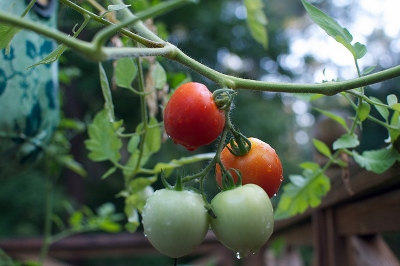
Flickr/sherbonbon
Though long held to be toxic, the admittedly alkaline leaves of tomato plants are certified by none other than food science writer Harold McGee to be edible , and they will make your summery, quickly-simmered tomato sauces pop with that unmistakable scent, the one that makes gardeners swoon and dream of sun-soaked days among the plants, harvesting and weeding. Just slip a tomato leaf or two into your sauce as you would basil or oregano. Though I don’t know of another use for tomato leaves besides this application as an aromatic, it’s a game-changing one for marinara lovers.
Cauliflower Cores
The most talked-about section of Gabrielle Hamilton’s cookbook Prune is titled “Garbage,” and it’s where she shares the dishes they make at Prune that capture all of those tantalizing, assorted odds and ends that accumulate in a restaurant walk-in and turn them into menu or family meal items—in other words, spinning gold from perfectly good food, in the form of profit and flavor. Hamilton advises simmering cauliflower cores in salted water until they are tender, then draining them. To plate: “Drench with the good olive oil until it just beings to pool in the bottom of the bowl as soon as you take them out of the water, so that they can drink the oil into their warm bodies.”
A less sensually-worded approach is to mince the cores and cook them—along with peeled, minced broccoli stems and possibly some florets, too—in a hot skillet filmed with olive oil. I let it all brown a bit, stirring frequently, and after ten minutes or so, you have a veggie hash that can top a big bowl of cooked grains. This brings out the sweetness of the cauliflower, without rendering it to mush.
Cilantro Stems
That cooling power and refreshing bite cilantro lends to salads and raw sauces is especially present in its stems. I tear off the rooty lower third or so of a bunch of cilantro, and chop up rest, stem and all, unless I’m using the leaves for a fussier garnish. I’ve even pureed cilantro stems to help tame bold dressings before, like this spicy miso one.
But don’t get carried away and start chopping up parsley stems, too; they’re tougher and unpleasantly strong. A few parsley stems do make a great addition to a pot of vegetable or chicken stock, though.
Celery Leaves

Flickr/Anastasia R
The yellow-green inner leaves (tucked away near the heart) of a bunch of celery are buttery in texture, with an aggressive celery bite that enlivens tossed and chopped salads. Use them as you would a fresh, leafy herb. I actually prefer celery leaves to celery’s herbal kin, lovage (sometimes known as cutting celery), since they’re not as green and grassy-tasting. You can also add those leafy, diminutive inner celery stalks to stocks and soups, but be conservative, as they are potent.
Apple & Pineapple Cores
Sort of for weirdos only, but I’m sure you’ve met someone who eats the entire apple, core and all. This is good for your fiber intake, but I’m not a fan personally. The cores of pineapples are a little more user-friendly. I worked with a food editor in a test kitchen once who always had us save them for her, and she’d walk around chewing on them like tropical cigars.
Mango Pits
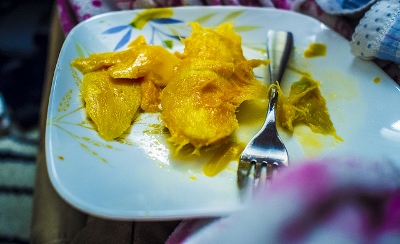
Flickr/jseliger2@N02/
Do you have kids who love mangos? After stripping as much of the mango’s flesh away as you can manage, there’s always some more clinging to the pit, so just hand it over to your kid to gnaw on. It’ll keep them busy for a good, oh, five minutes or so. And if you opt to keep it for yourself, all the better.
Sara Bir is Paste’s food editor, and a terrible but enthusiastic gardener. Twitter: @Sausagetarian.